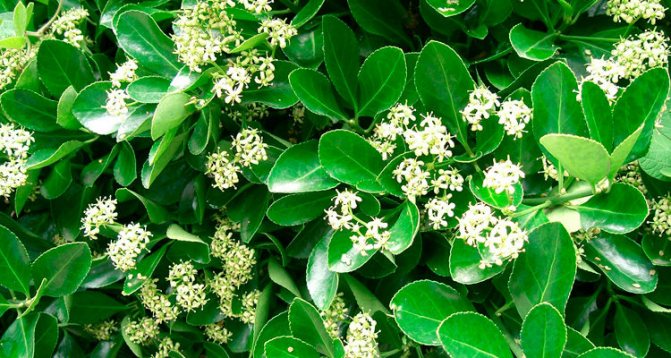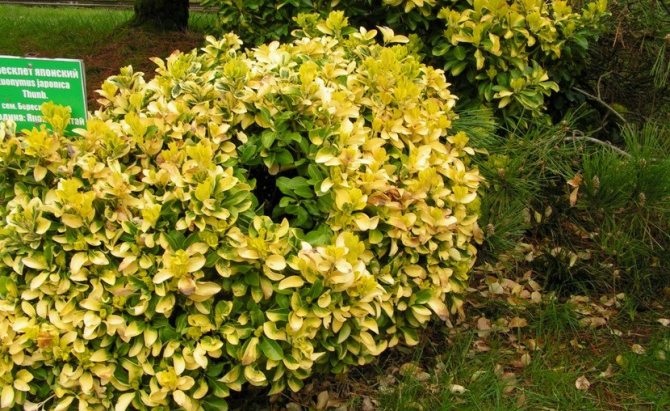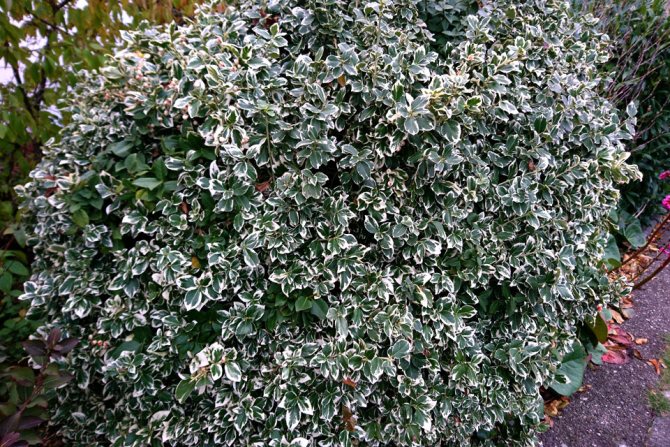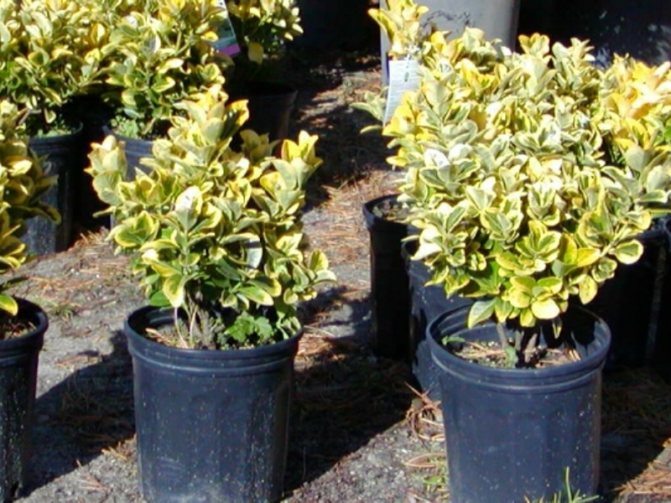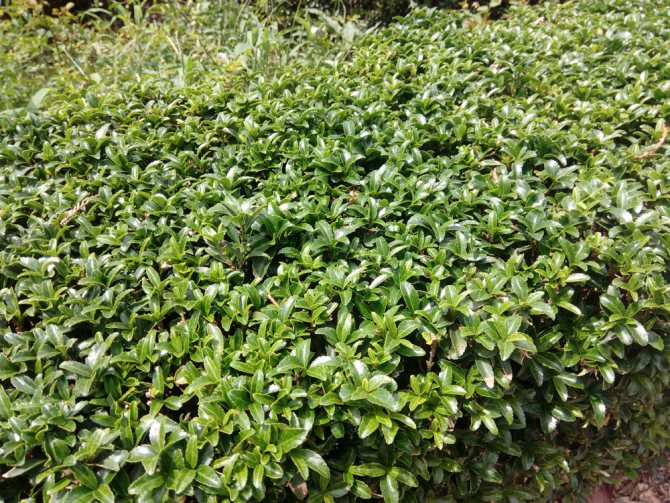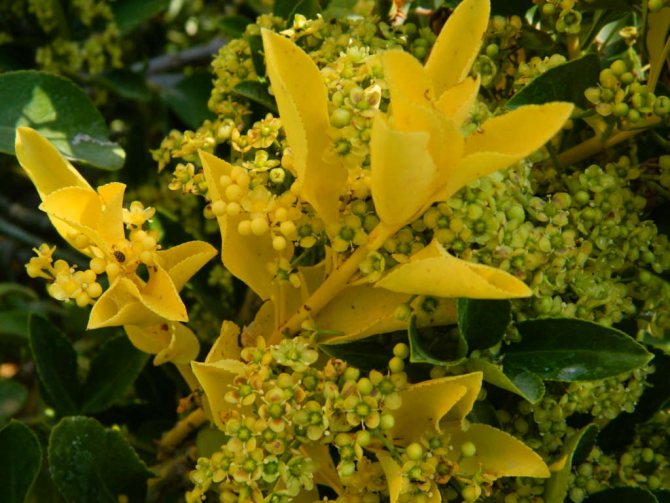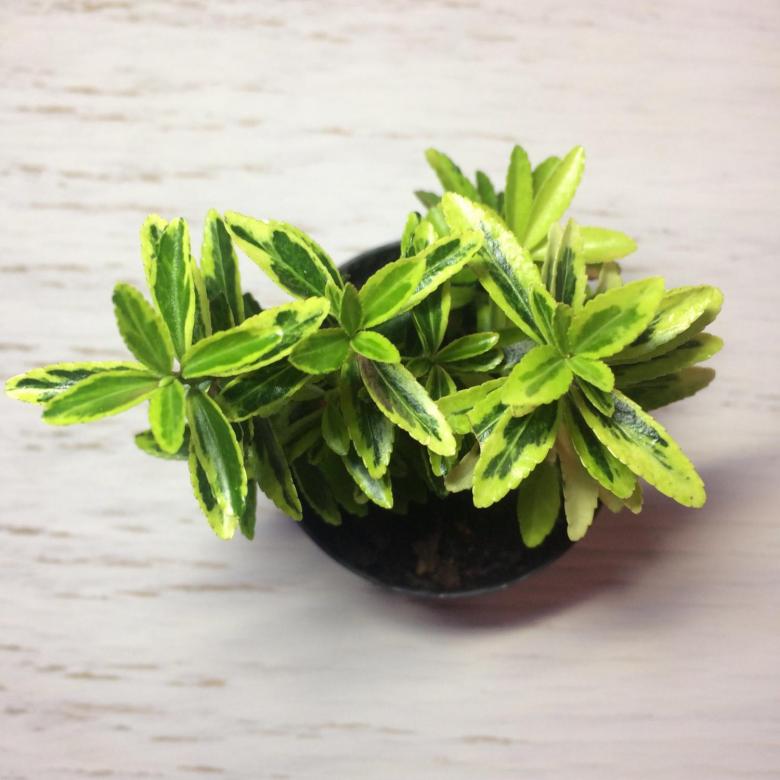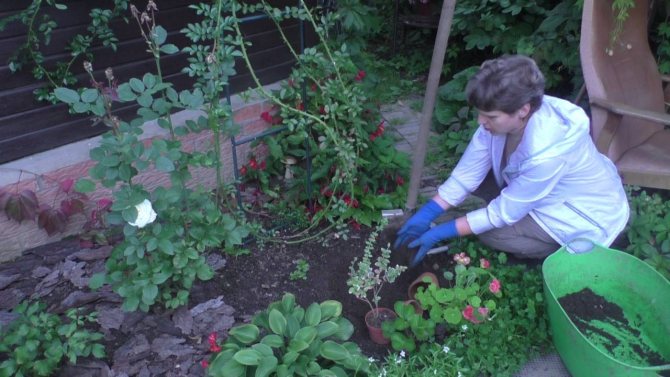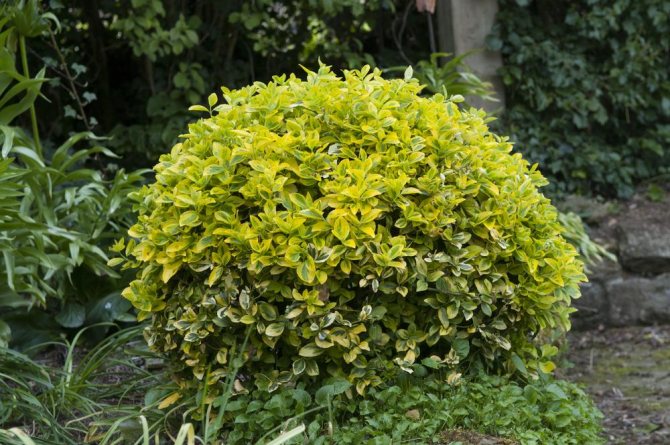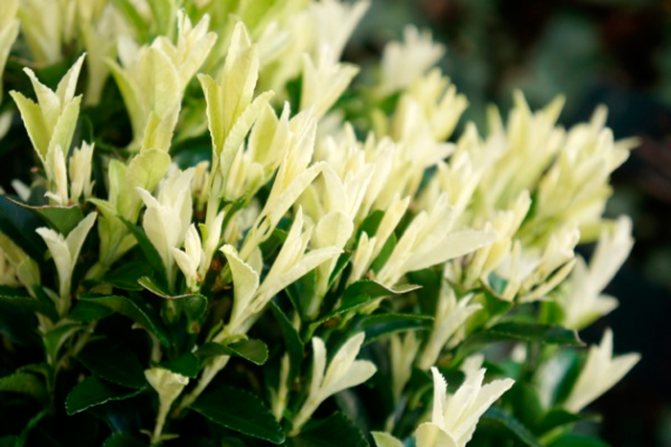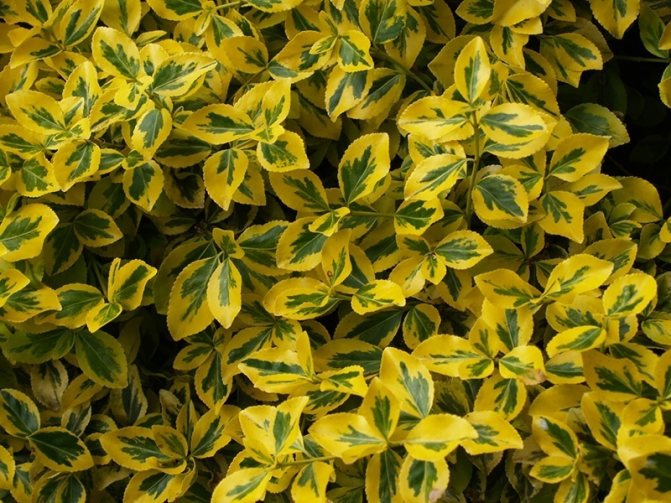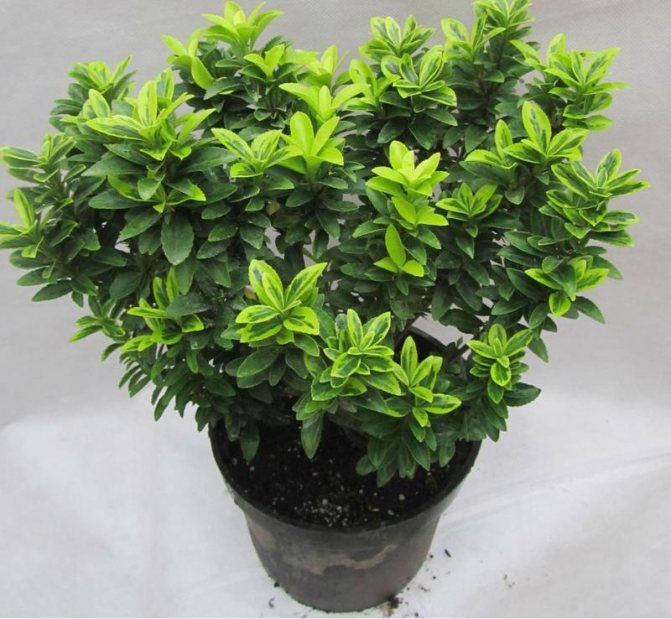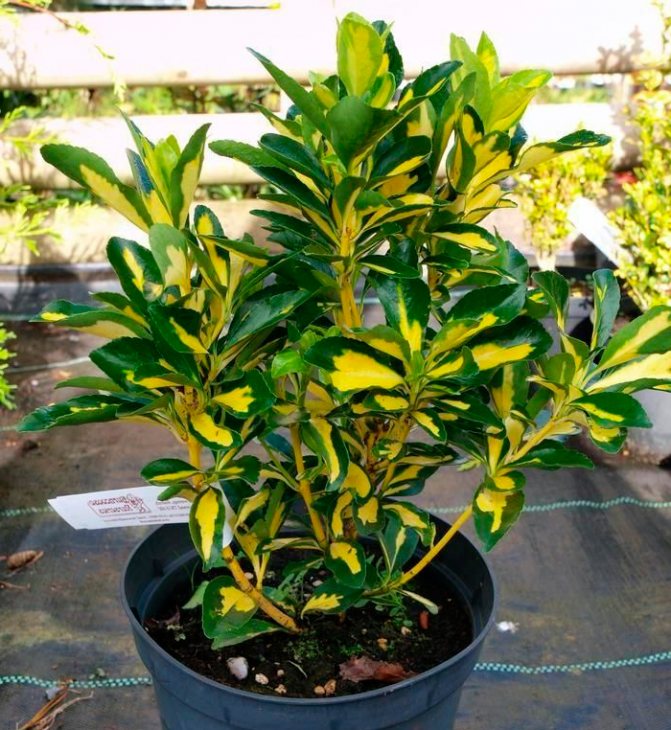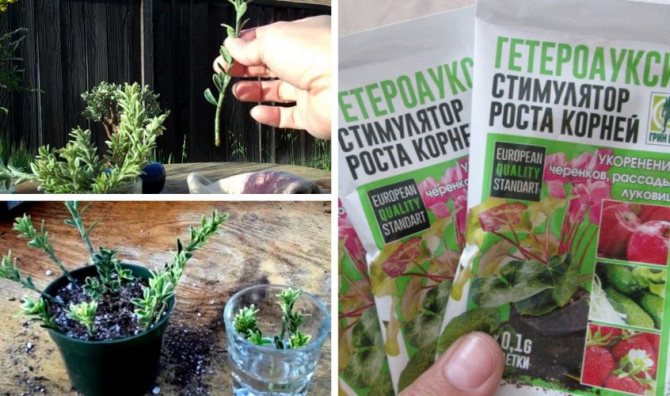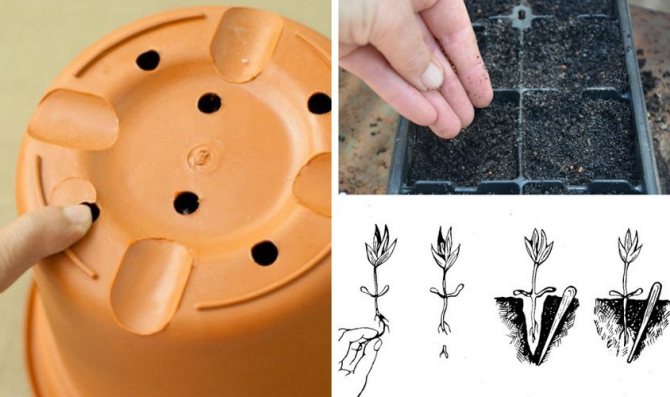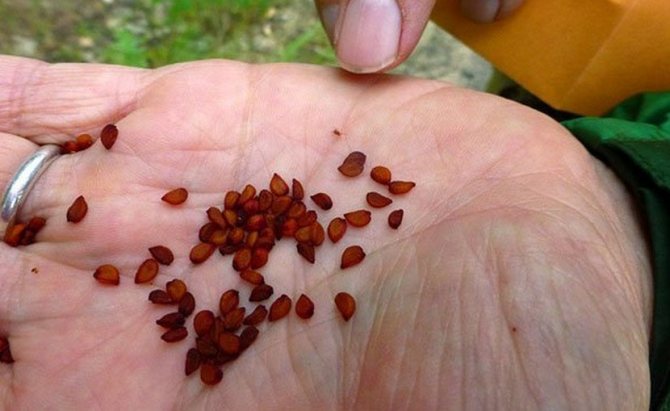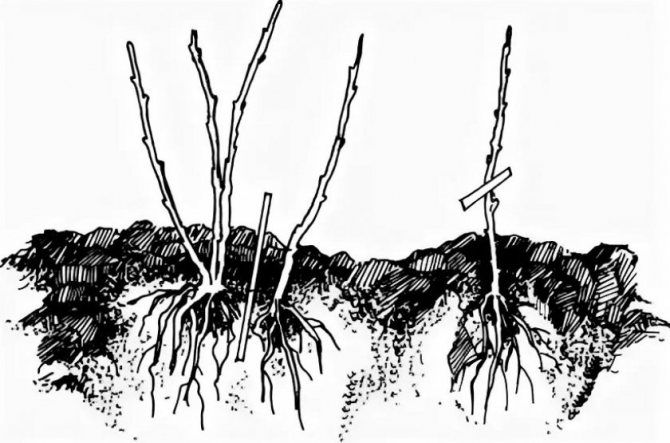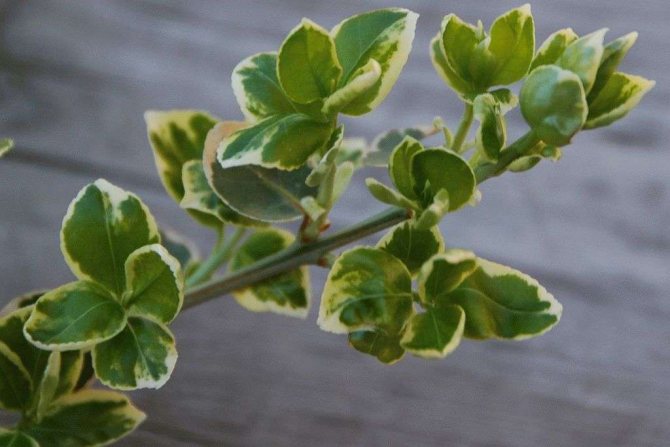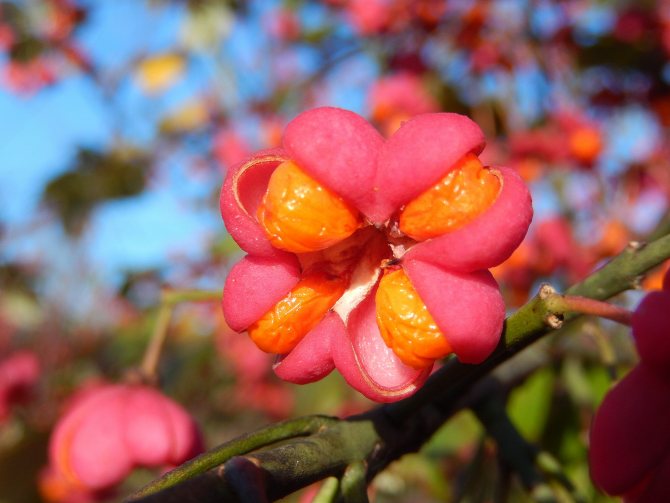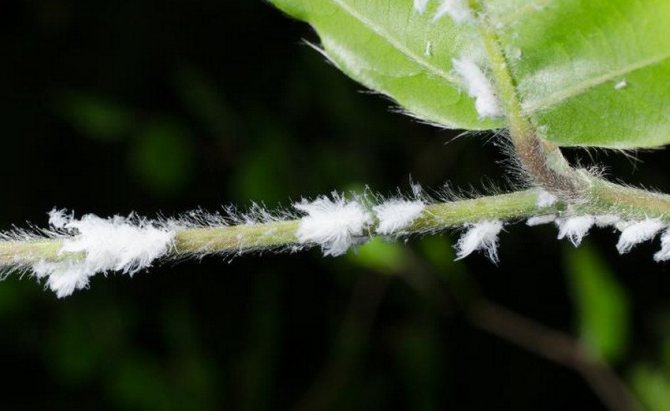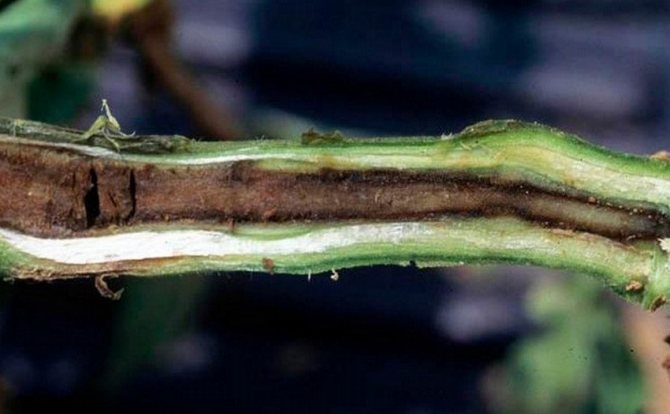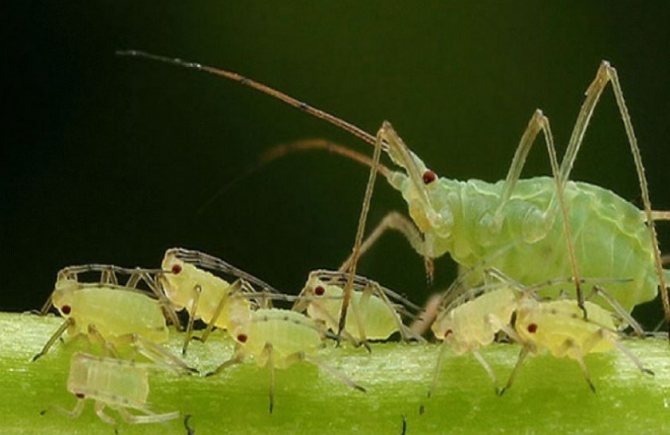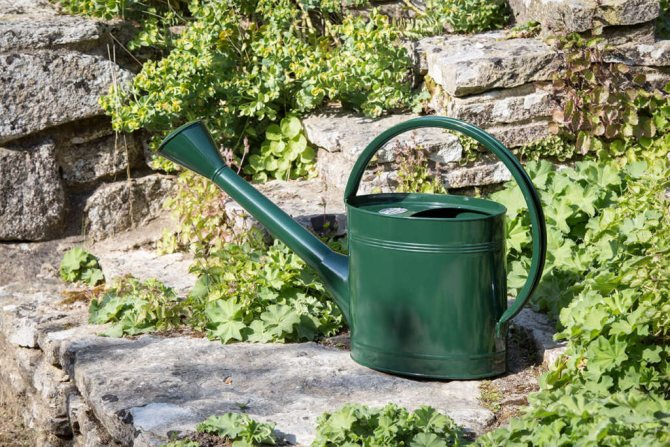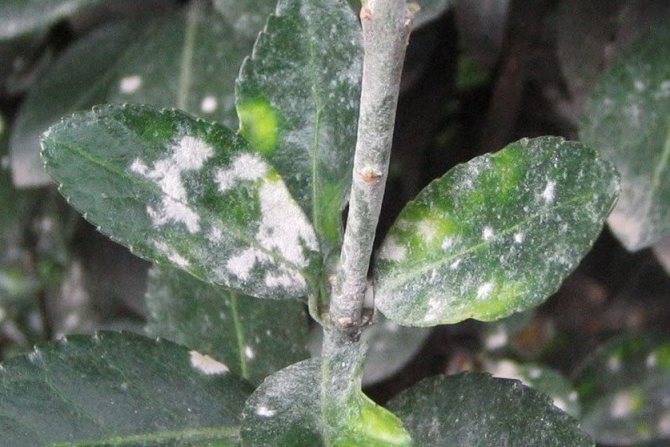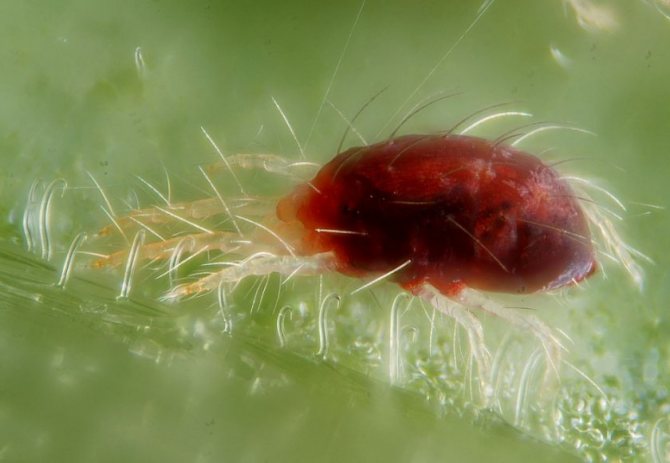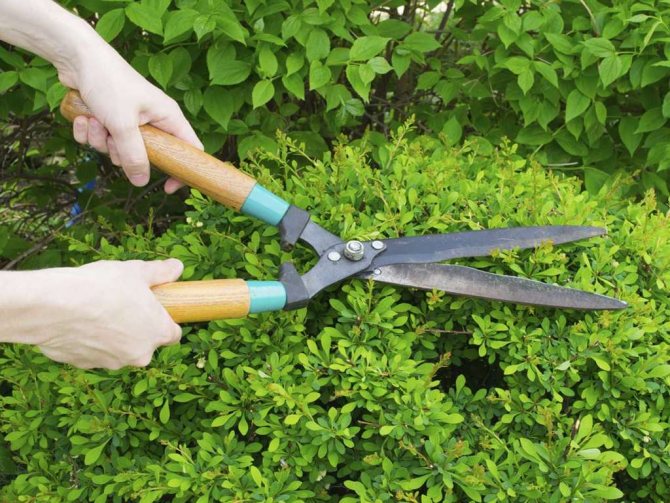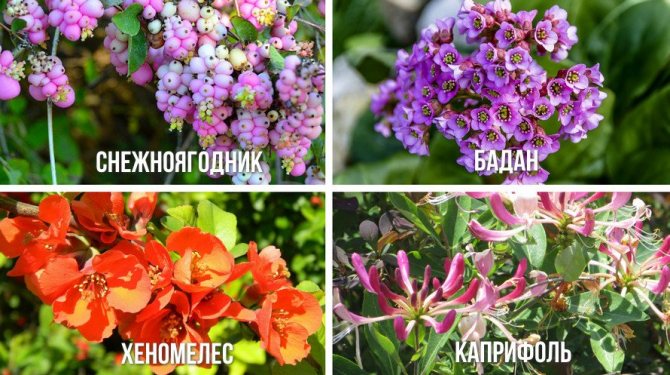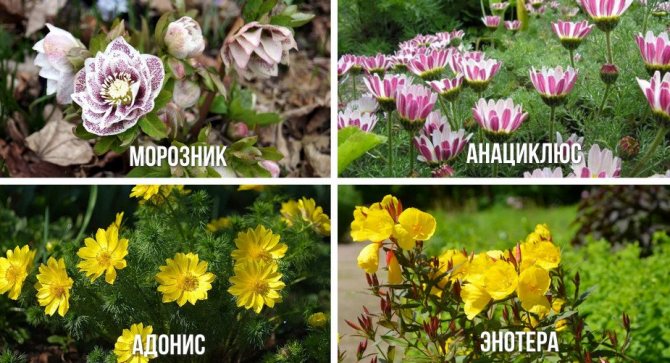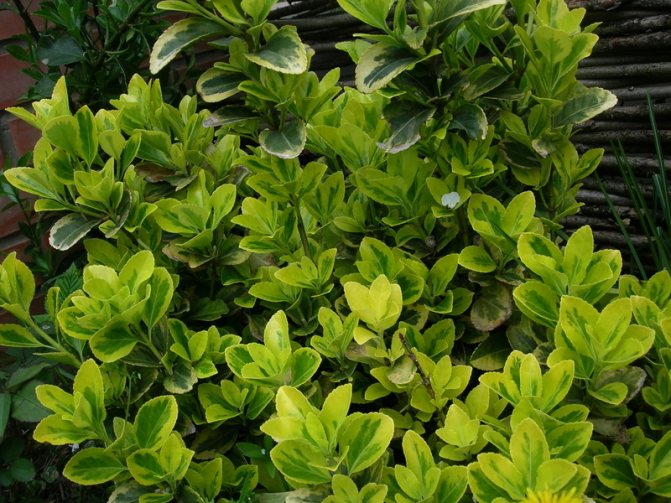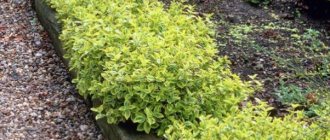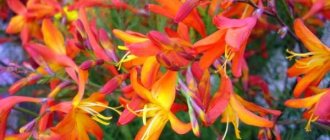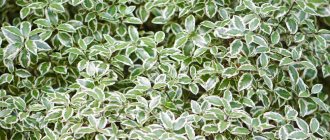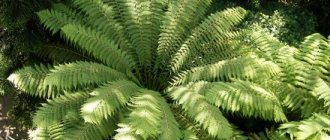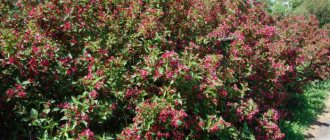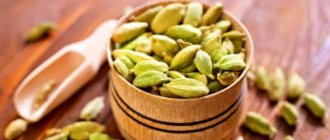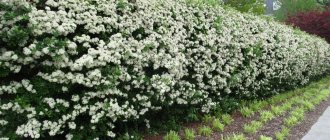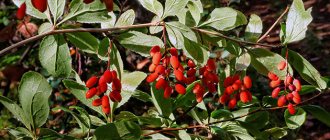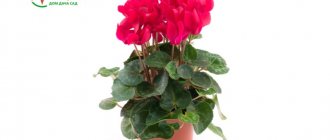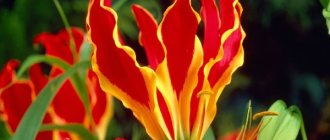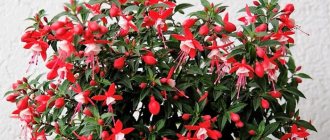Japanese spindle tree (Latin euonymus japonicus) is widely used in landscape design. The easily recognizable shrub can be seen planted in the borders of the flower beds in public parks.
Japanese spindle tree is widely used for landscaping megalopolises. It looks great in flower beds and stone slides, Japanese gardens and rock gardens. Perennial greens are eye-catching in winter, reminding of the coming spring.
The evergreen shrub attracted not only professional designers, but also amateur gardeners who grow it on their plots. Often, Japanese euonymus acts as a tub plant. Its cultivation has a number of features that must be considered when buying a seedling.
Features and appearance
Eastern Euonymus is a very attractive shrub with dense, dark green foliage. Uneven, pointed leaves are large and dense enough.
It blooms with white-green flowers, which are collected in inflorescences of 15-30 pieces. Houseplants rarely bloom. After flowering, reddish fruits that are dangerous to humans and animals.
For safety reasons, the plant should be placed at a height out of the reach of small children and pets.
Eating even small amounts of the fruit can cause stomach upset, heart palpitations, and weakness. After a large number of berries eaten, death can occur.
In the wild, it is most often found in Japan, China, Korea. Grows near deciduous and mixed forests. It can grow up to 5 meters high.
At home, shrubs do not reach this height and are much smaller.
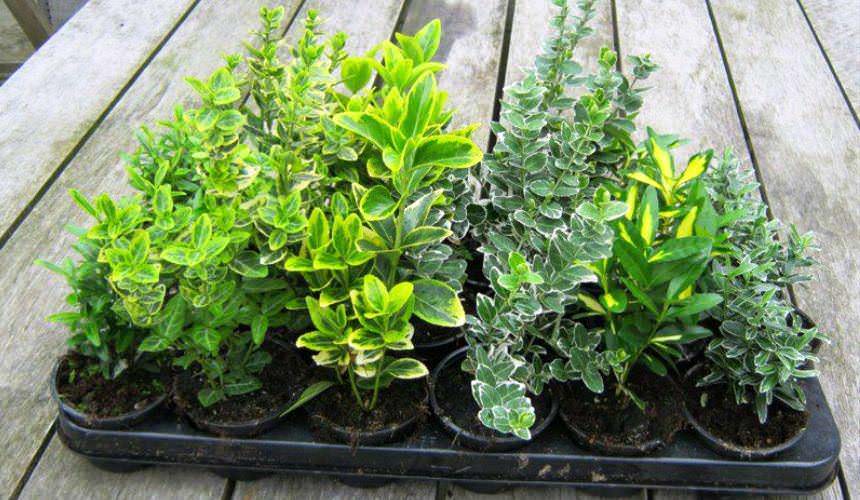
If the plant does not create the necessary conditions for development, then an increase in growth will occur only in spring, and in the remaining months its development will freeze. Average in one year the plant stretches 15-20 centimeters.
If the shrub is insufficiently provided with water, the leaves begin to curl and dry out. Euonymus is a fairly frost-resistant shrub.
Gorse (drok): description and types of plants, growing a flower
Japanese spindle tree in Siberia: planting and care
The Siberian region has no less severe climate than the Urals, to which tropical shrubs are not accustomed. Therefore, in this region, as a rule, it is planted in pots and boxes to decorate the garden and, with the onset of cold weather, put it in the house or on the veranda, where the temperature allows the euonymus to keep life.
For your information! At a temperature of -10 ° C, the bush freezes in growth, but continues to maintain vitality and resumes its development with the onset of warmth.
Favorable conditions for euonymus
The place where the euonymus will grow can be located both in an open area and in the shade. But in partial shade, it feels best, in the foliage, blue-green shades appear, while in the open sun the foliage acquires a pinkish tint.
Caring for Japanese euonymus at home is very simple. Plant recommended to be placed on the south side of the housebut out of direct sunlight. In winter, the euonymus must be provided with additional lighting.
In the summer, the pet can be taken out on the balcony or veranda, but make sure that there is no draft.
The optimum temperature for keeping a shrub in the warm season should be from +18 to +25 degrees.
In winter, he needs rest and cool air. If the temperature on the glazed balcony allows it, it can be kept there. He is not afraid of lowering the air temperature to +5 degrees. Plant pot should not be placed near batteries and heaters.
Description
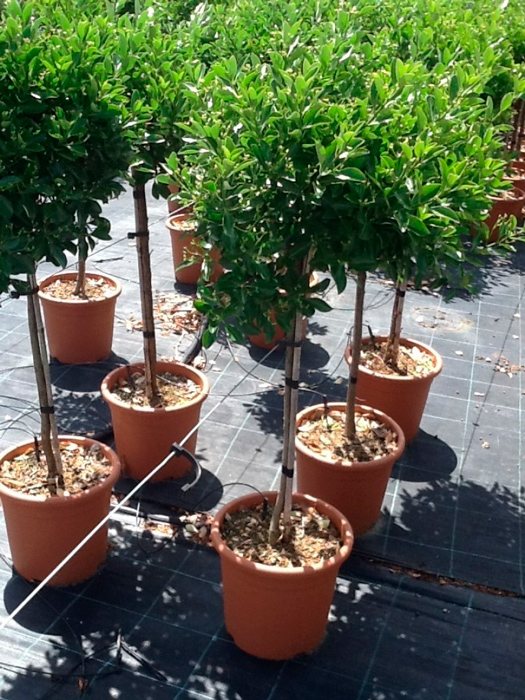

Japanese euonymus belongs to evergreen shrubs. Unlike conifers, its branches are covered with small leathery leaves, predominantly rich green in color. Some varieties have a feathery leaf color. A native of Japan is characterized by high resistance to air pollution, lack of lighting.
Euonymus blooms in mid-summer. Umbrella flowers are colored to match the green foliage and give the plant a unique charm. The fruits look much more attractive than flowers. Fruits are small, spherical, bright orange and red.
In temperate climates, the height of the shrub reaches half a meter or more. Although in its homeland, euonymus often grows up to seven meters. Perennial agrotechnology is not very complex. However, failure to adhere to certain growing rules often leads to the loss of a specimen.
Transplanting a Japanese bush
The period from May to September is the best time for replanting shrubs. The weather during work should be cool and cloudy.
The plant is quite undemanding to the composition of the soil in which it is planted. The best option for planting would be a mixture of deciduous soil, turf, sand and peat. It is also a good idea to use a mixture of greenhouse soil, turf and sand.
The shrub should be planted in moist alkaline or neutral soil, providing bottom heating during engraftment. Sour soil must be calcified before planting.
Graceful hamedorea elegance or indoor palm
When transplanting euonymus into open ground, sufficiently deep pits are made. Place them at intervals, taking into account the size of future mature plants. Drainage from crushed stone, broken brick or expanded clay is laid in the pits. Then fertilizers are laid. The land near the planted bush is watered and compacted.
The procedure for transplanting indoor Japanese euonymus:
- Disinfect the pot with boiling water, and drainage and soil by calcining.
- Lay a drainage layer of about 3 centimeters, pour earth on top with a slide.
- Get the shrub out of the old pot, gently holding the clod of earth on the roots.
- Inspect the root system. Remove damaged and soft roots.
- Moisten the soil and place the shrub in a new pot. Gradually cover with earth, periodically shaking the pot so that the earth is evenly distributed, leaving no empty spaces.
- Water and place the container with the plant in partial shade. After it takes root, move to a lighted place.
Preparing for winter
The climate of the temperate zone allows the euonymus to endure frosts down to -20 ° C, but provided it is insulated with snow and polyethylene. If frosts in winter exceed −30 ° С, then you should not risk the southern bush. It is necessary to transplant a shrub with an earthen lump into a box and bring it to a home for wintering, which may be unheated. The main thing is that the plant does not remain unprotected in the frost.
Note! Ground cover material for preserving the root system can be snow, straw, spruce branches, dry grass and other materials that create an air cushion.
Thus, Japanese euonymus is a wonderful plant that amazes with its unusual greenery.It will look spectacular in any area. The main thing is to plant it correctly and provide decent care.
Proper plant care
Caring for Japanese euonymus is quite simple. It should be watered regularly, but waterlogging should be avoided. Spraying the bush three times will also not be superfluous. It is important to loosen the soil and remove weeds in a timely manner.
In the spring, you need to provide the plant with nitrogen fertilizers that stimulate the active growth of foliage. In the summer they are fed with potassium-magnesium mixtures.
To keep the bushes compact and dense enough, you need to remember to pinch the tips of the branches. When this procedure is not carried out, undersized species of euonymus begin to actively expand in breadth. And the branches in contact with the ground take root. As a result, the bush may become too loose.
For the winter period, young shrubs are covered with coniferous branches. Adult plants overwinter well without shelter.
Japanese spindle tree in the Urals: planting and care
Japanese euonymus is a thermophilic shrub, so it can hardly endure severe Ural frosts. In late September - early October, it is worth taking care of its insulation. It is necessary to knock down the frame for the cover with polyethylene. After the snow falls on the area where the tropical bush grows, it is worth making a large snowdrift. But even this does not always save shrubs from severe frosty winters.
Note! Watering the euonymus in the Urals is required to be moderate, and in the fall it is better to abandon it altogether, replacing it with the irrigation of the bushes with warm water. If frosts catch the plant in moist soil, the roots will freeze faster and die.
Reproduction methods
Spindle tree is propagated by green cuttings and division. In the summer, cuttings with one internode, 5-6 centimeters long, are cut from strong young branches and planted in greenhouses with a film shelter.
After 1.5-2 months, the cutting takes place. After that, it can be transplanted, pre-treated with an agent that stimulates root formation.
Also, Japanese euonymus can be propagated using seeds. Preliminarily, within 3-4 months, it is advisable to stratify them (keeping in a cold place) at a temperature of + 2-3 degrees. Their readiness for planting can be determined by the broken skin, which is removed. The seeds are kept in a weak solution of potassium permanganate.
Myrtle plant: description of the shrub and care of the indoor flower
Pest control
For all its stability and unpretentiousness, Japanese euonymus can still get sick or suffer from aphids, mealybugs, spider mites and scale insects. The attack of pests is evidenced by the fact that brown spots appear on the leaves and they begin to curl and fall off. White lumps that appear on the leaves indicate the presence of the cherven. And the spider mite leaves behind a cobweb.
Damaged leaves must be removed immediately. After that, treat with Fitoverm to kill the tick. Additionally, foliage and air can be humidified, since the spider mite does not tolerate dampness.
The mealybug is removed from the leaves and the plant is processed with Confidor.
The shield is removed from the leaves with a sponge previously soaked in a solution of laundry soap. Then the bush is treated with Aktara, and after all the procedures, it is washed under the shower.
The aphids that attack the bush are destroyed with the help of the Biotlin preparation. After that, pests and their eggs adhered to the plant are removed with soapy water.
Diseases and pests
Japanese spindle is capable of damage spider mites, scale insects, aphids, mealybug... If infestation with these pests is detected, chemical spraying should be used.
The shrub is practically not exposed to fungal infection.
In excessively bright light, the ends of the leaves can curl up and dry out. With an excess of moisture in the soil, Japanese euonymus loses its lower leaves and stops developing.
Drops the leaves shrub also with increased dryness and high temperature.
Japanese euonymus is prone to shedding foliage as a response to any change in conditions of detention or improper care. Exactly because of this reason the bush loves peace and unchanging conditions.
Treatment of diseases
Those who have been engaged in the cultivation of spindle trees for a long time and with enthusiasm are advised to carry out preventive measures to prevent the appearance of diseases in these unusual plants. As a rule, excessive watering provokes the created problems. Diseases affecting shrubs:
- Powdery mildew... It manifests itself as a whitish bloom located on the aboveground wall of the pot. It will help get rid of the Fitosporin-M problem. But first, all parts of the shrub are wiped, and the damaged ones are removed. If the container is covered with plaque, it must be discarded.
- Shoot rot... Branches soften under the influence of this fungal disease. It is necessary to promptly remove damaged shoots and treat the bush with Fungicide. If the plant is completely affected, it should be destroyed so that healthy shrubs are not endangered.
- Root rot... The symptoms of this problem are sluggish, dry leaves and soft stems. To solve the problem, the soil is completely changed, and the affected parts of the roots are removed. To avoid infection, during transplantation, the container and soil are treated with crushed coal.
Loch Indian: description, planting and care of the Greek plant
Use in landscape design
Due to its ability to grow well, euonymus is successfully used in landscape design. In warm regions, Japanese euonymus is used as a hedge. It can also be used to decorate buildings.
Some landscape designers make euonymus thickets a kind of backdrop for other ornamental plants or flower arrangements. Small euonymus are great for decorating alpine slides and rocky gardens. The shrub is well complemented by junipers, spruce and thuja.
By means of a haircut, the most interesting figures are made from it. You can beautifully decorate your site without design education, since these plants are unpretentious and very attractive. Anyone, subject to all the rules for planting and caring for Japanese euonymus in the garden, can grow beautiful shrubs near the house, which, no doubt, will decorate the site.
Popular varieties
Today, through the efforts of breeders, more than two dozen varieties have been eaten away. Plants of different colors of foliage, flowers, different crown shapes and growth vigor.
Latifolius Albomarginatus
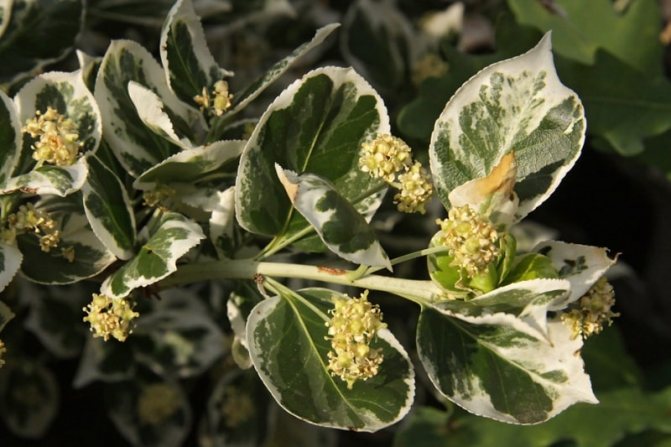

The variety is characterized by the presence of bright green leaves with white stripes along the edges. Albomarginatus looks similar, but the border of the leaf plate looks narrower.
Moon
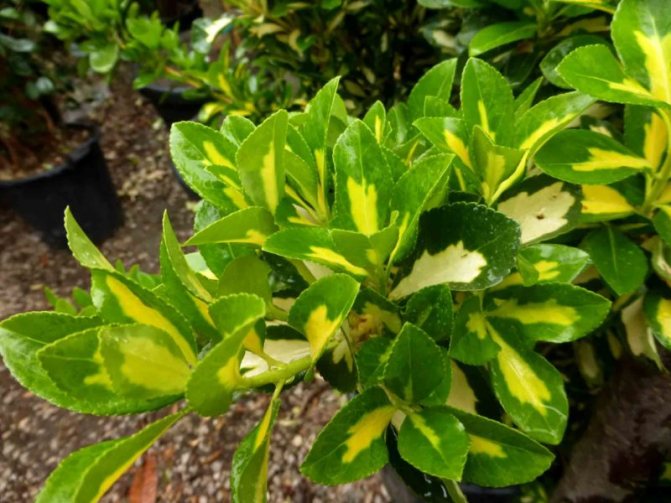

The "Luna" variety has leaf plates painted in a beautiful olive color with yellowish tints. Their border is wide and colored green.
Mediopictus
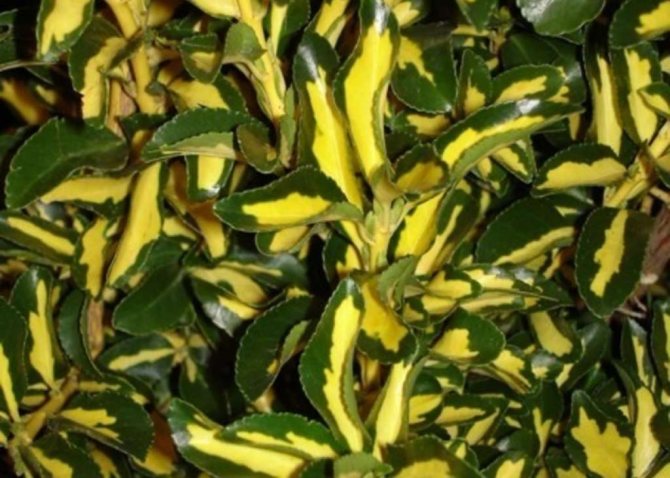

The Mediopictus variety can be recognized by the beautiful golden color of the plates and the green stripe as the border. "Microfillus" has small green leaves with a golden border.
Aurea
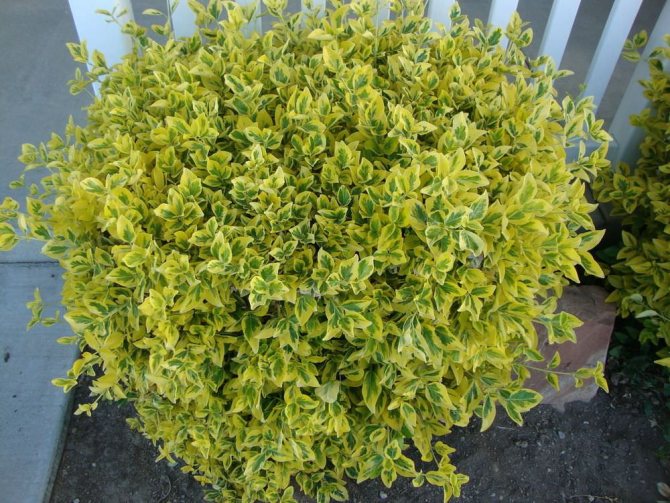

A shrub variety "Aurea" is characterized by the presence of a green border and a bright yellow longitudinal stripe.
Owatus Aureus
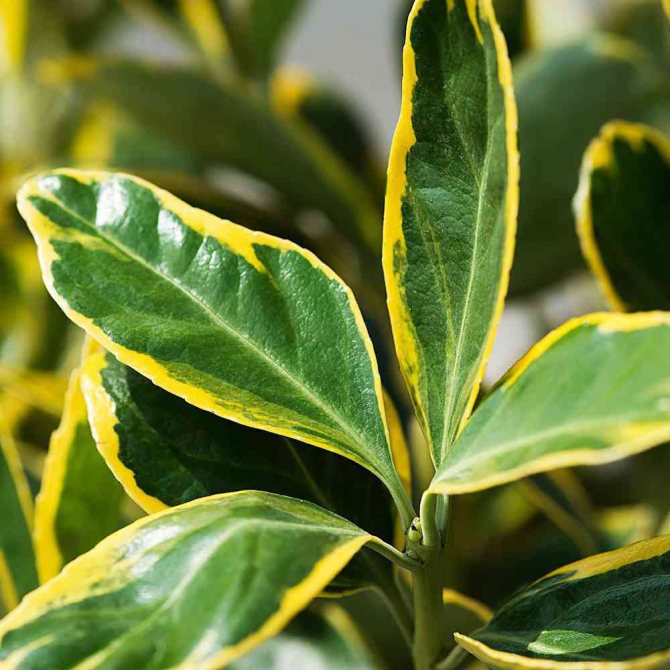

"Ovatus Aureus" is dwarf and has small oval leaves. The color of the leaf plates is a combination of a bright yellow border with an emerald longitudinal stripe.
Bravo
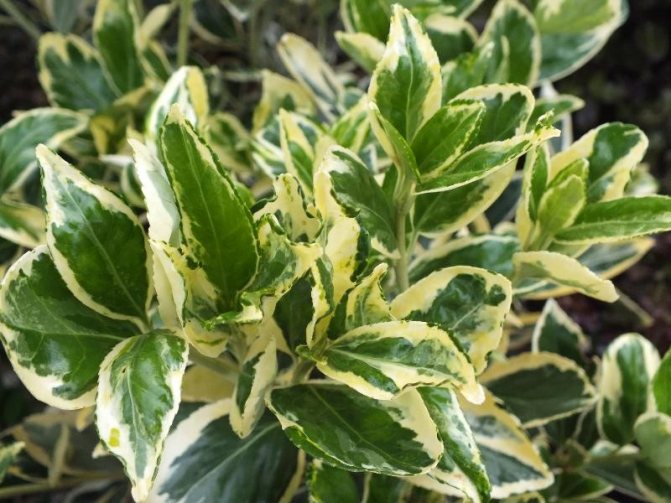

Shrub of the "Bravo" variety has dark green toothed foliage. Some leaf blades are decorated with spots of yellow, beige, white or silver, located either in the center or along the edges.
Other notable varieties of euonymus include Marik, Microfillus Aureovarietygatus and Ecstasy.

